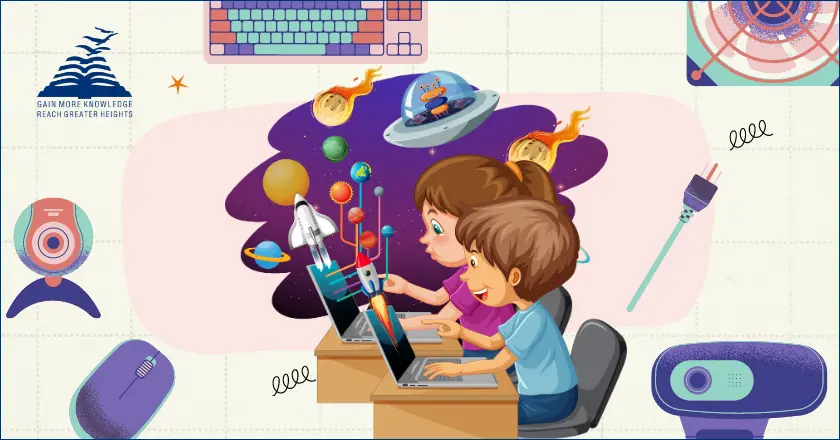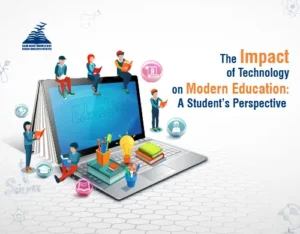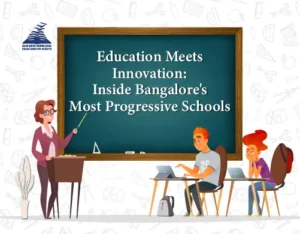It is no secret that technological progress has accelerated in the last few decades and is at the centre of our lives, and the classroom is no exception. Students in today’s classrooms have grown up in a technologically advanced world. They have never known a life without cell phones, computers, televisions, and other common technological devices.
Despite this familiarity, educational environments may be slow to implement technology in the classroom. Many schools continue to employ analogue tools such as books, notebooks, whiteboards, and posters. This is likely due to a lack of resources. Nonetheless, some schools have invested in instructional technology like smart boards to replace obsolete projectors, as well as iPads and Chromebooks.
In numerous ways, technology has the potential to make education easier and more equitable. Determine how teachers and students can benefit from additional classroom technology.
But how exactly does it improve the educational process? and how can educators design courses that make use of technological tools?
Read this article to find out how you can make the most of technology in your classroom and how it will help students learn.
5 Advantages of incorporating technology into the classroom
- Improves student engagement and interaction
- Many believe that the use of technology has the potential to enhance student interaction and engagement in comparison to conventional textbooks.
- At present, technology has become deeply ingrained in the lives of every student. As a result, individuals experience a notable increase in comfort and self-assurance when utilising devices with which they are familiar.
- When schools implement a one-to-one device-to-student ratio, all students have equal participation opportunities, which ensures that all students are afforded equitable opportunities for participation.
- The presence of various interactive programmes and software enables students to engage in diverse modes of idea sharing and question response.
- Offers Innovative Learning Strategies
- There are a number of educational applications that provide novel approaches to teaching students a wide range of concepts, from English, literature, and science to mathematics and problem-solving.
- Numerous learning theories propose that engaging in activities such as puzzles, word searches, and other games can effectively enhance cognitive functioning, enabling students to approach and resolve problems from diverse perspectives.
- Increases both productivity and creativity
- Technology makes it much simpler for teachers to manage and monitor all school requirements. It facilitates the creation of high-quality presentations and well-researched papers by students.
- Additionally, technology can enhance creativity. It encourages teachers to find new ways to engage and maintain their students’ attention when delivering lectures. Similarly, it encourages students to investigate a wide variety of content to advance their education.
- Promotes Collaboration
- Not all students find the same topics stimulating. Teachers can encourage their students to write about topics that interest them in order to broaden their understanding. In doing so, they can ensure that students are able to engage in their favourite activities while gaining valuable knowledge.
- Google Docs, Google Slides, Canva, etc., for example, allow students to collaborate with classmates even when they are not physically present in class together. Collaborating in this way promotes critical thinking and teamwork skills.
- Keeps you up-to-date
- Schools in Bangalore and everywhere else can use the online platform to update both staff and students in the event of an urgent announcement or emergency. They can use technology to inform everyone about upcoming events, crucial information, and the most recent news. This is the quickest way to inform and connect everyone.
- If students or parents have questions or concerns, they can contact their respective teachers or administrators directly for prompt responses. This will reduce communication gaps between the school and the students, ensuring that everyone is informed in the event of an emergency.
How can Teachers use Technology in the Classroom?
Technology can significantly enhance classroom learning experiences for both teachers and students. For example, teachers can use technology at the best schools in Bangalore in various ways to supplement traditional teaching methods, making lessons more engaging and interactive.
- Teachers can use technology by incorporating multimedia resources into their lessons, which include videos, images, and audio recordings that help illustrate concepts or ideas being taught. These resources can be especially helpful for visual learners who may struggle with text-based instruction.
- Technology can be used in the classroom through online collaboration tools. Teachers can encourage students to work together on projects using platforms like Google Drive or Microsoft Teams. These tools allow students to collaborate remotely, which is perfect for when schools are closed due to unforeseen circumstances such as a pandemic or bad weather.
- Teachers can use educational apps and software programmes designed specifically for the subject they teach. For instance, maths teachers might opt for software that teaches complex equations, while language arts teachers may choose applications designed to improve writing skills.
How does technology impact the classroom? What are some of the challenges?
As with any new technology implementation, integrating technology into the classroom will pose some challenges.
Technology in the classroom can present a number of challenges that anyone may face:
- One challenge is the issue of access and equity. Not all students have equal access to devices like mobiles and laptops outside of school, which can create an imbalance in their ability to use them effectively in class at the best schools in Bangalore.
- Another challenge is technical difficulties. Electronic devices can sometimes fail or malfunction, causing disruptions in class time that take away valuable learning opportunities.
- There is the potential for distraction among students who may be more interested in playing games or browsing social media than engaging with course materials.
- There are also concerns about privacy and security when using online tools and apps in the classroom. Teachers must be diligent about protecting student data while still utilising these useful resources.
In spite of these challenges, many educators believe that incorporating technology into teaching practices ultimately benefits both teachers and students.
Conclusion
Technology has brought remarkable changes to the education sector by offering numerous benefits to both teachers and students.
However, there are challenges that come with incorporating technology into classrooms. Therefore, it is essential for the best schools in growing and digitally apt cities like Bangalore to invest wisely in technology while ensuring they have proper support systems in place. As technological advancements continue to increase worldwide as well as within some of the best schools in Bangalore, we can only expect that our children’s future will be even brighter through advanced technological incorporation within our school systems.






